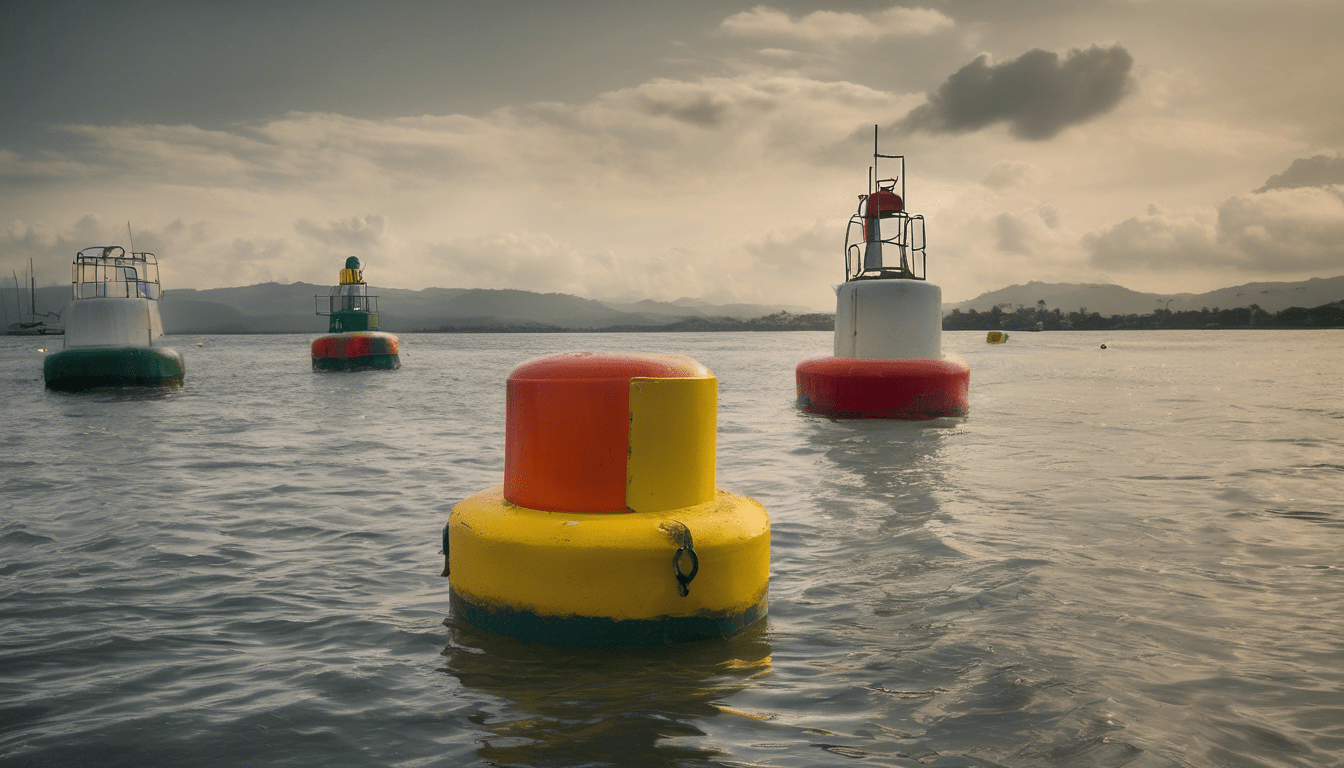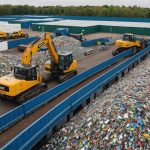Selecting mooring buoys or boxes in Colombia requires a nuanced understanding of local environmental and maritime conditions. Coastal climate patterns, marine currents, and seasonal weather fluctuations profoundly influence their durability and stability. Coupled with material standards, load design, installation logistics, and regional regulations, choosing the right system ensures safety and longevity. Exploring these key factors offers a comprehensive perspective tailored to Colombia’s unique maritime landscape, empowering stakeholders to make informed, resilient choices.
Environmental and Oceanographic Conditions in Colombia
Understanding the environmental factors affecting mooring buoy deployment in Colombia is crucial for ensuring stability and durability. Colombia’s coastlines experience diverse regional climate patterns that influence oceanographic conditions, making detailed analysis essential before installation.
Also to discover : Essential cybersecurity tactics for uk businesses to protect against digital threats
The country’s coastal waters face complex marine currents which vary significantly between the Pacific Ocean and the Caribbean Sea. For example, the Caribbean coast experiences the Caribbean Current, moving warm water northwestward, while the Pacific side is influenced by stronger and more variable currents due to its narrow continental shelf. These currents affect buoy positioning by exerting constant horizontal forces that can strain mooring systems if not properly designed.
Tides in Colombian coastal areas generally follow a semi-diurnal pattern, with two high and two low tides each day. However, tidal ranges differ locally, impacting the vertical movement of mooring buoys. Designers must consider the maximum tidal fluctuation to prevent mooring line slackness or over-tensioning, which could cause premature wear.
Also read : Empowering inclusivity: cultivating a vibrant workplace culture in uk charitable organizations
Wave dynamics, particularly during storm seasons, play a pivotal role. The Caribbean coast, subjected to seasonal hurricanes and tropical storms, experiences high-energy waves that challenge the buoy’s integrity. On the Pacific side, although hurricanes are rare, strong swells and frequent rain-driven storms can cause abrupt wave action changes. Seasonal weather variations such as increased rainfall and wind intensity during Colombia’s rainy season also impact mooring stability, requiring materials and configurations that accommodate such fluctuations.
To achieve long-term performance, it is advisable to hire a professional to install a buoy in Colombia who understands these environmental nuances. Installation specialists can tailor mooring designs to local oceanographic factors, optimizing safety and lifespan.
In summary, the combination of regional climate patterns, marine currents, tides, and wave dynamics, along with seasonal weather variations, directly influences the efficacy of mooring buoy placement in Colombia. Properly accounting for these environmental factors is essential for a secure and durable mooring solution.
Material Durability and Construction Standards
Selecting the right corrosion-resistant materials is crucial for mooring buoys operating in Colombia’s saline waters. Marine environments accelerate metal degradation, so materials must withstand continuous exposure to saltwater. Commonly, marine-grade steel is favored for its strength and rust resistance. Additionally, advanced composites and specialized coatings enhance durability by providing barriers against corrosion, significantly extending the buoy’s functional life.
Colombian mooring buoys must comply with both national maritime safety regulations and established international standards. The country’s maritime authorities enforce strict guidelines tailored to local coastal conditions. Furthermore, adherence to globally recognized standards such as ISO and IMO ensures the mooring system meets safety, durability, and environmental protection benchmarks. These regulations cover material specifications, installation procedures, and performance criteria, guaranteeing the system’s reliability and user safety.
In terms of longevity, the expected lifespan of mooring buoys depends heavily on the chosen materials and environmental factors like water temperature, salinity, and wave action. Proper selection and maintenance can result in buoys functioning efficiently for several years before replacement is necessary. Routine inspections and upkeep—including cleaning, repainting with anti-corrosion coatings, and hardware checks—are essential to sustain system integrity under challenging marine conditions.
For those unsure about material choices or compliance complexities, it is advisable to hire a professional to install a buoy in Colombia. This ensures both durability and regulatory adherence, safeguarding your investment and operational efficiency.
Load Capacity and Design Specifications
When selecting a mooring buoy or box in Colombia, understanding the load capacity is crucial. This capacity defines the maximum vessel size and weight the buoy can safely hold. Ignoring these limits can lead to serious damage to both the vessel and the buoy system.
Colombian waters often experience dynamic loads caused by wave action, currents, and tidal movements. These dynamic forces must be accounted for in the design of any mooring buoy. A buoy designed without considering the specific marine conditions may fail prematurely or compromise vessel safety.
Design specifications must address various sea states common in Colombia, ranging from calm coastal waters to rough open sea environments. This includes material strength, anchoring system robustness, and buoyancy. For example, a buoy intended for a busy port in Cartagena requires different design parameters than one used along the Pacific coast, where waves can be more aggressive.
To ensure safety and long-term durability, the buoy’s design should comply with international and local standards that reflect these environmental factors. These include certifications and engineering calculations that incorporate the vessel’s weight, the mooring line tension, and the environmental load factors.
If you are unsure about the correct specifications needed, it is wise to hire a professional to install a buoy in Colombia. Experts can tailor the design to your vessel’s load requirements and the local maritime conditions, guaranteeing safe and effective mooring.
Installation, Cost, and Operational Considerations
Understanding installation challenges is crucial when deploying mooring buoys in Colombian coastal areas. Access to sites often involves navigating complex terrain, including rocky shorelines and variable seabed conditions. These geographic factors require tailored logistical support, such as specialized vessels and equipment capable of handling these environments. Infrastructure near the coast, like docks or roads, may not always support heavy machinery, complicating delivery and setup. Therefore, careful planning is necessary to ensure safe and efficient installation.
Assessing the costs associated with deployment and maintenance begins with the initial installation expenses. These include materials, transportation, labor, and permits, which can vary significantly depending on the location. Colombian coastal regulations and environmental considerations can also affect costs. Long-term operational costs involve routine upkeep, corrosion prevention, and possible replacement of components affected by saltwater exposure and weather. Regional factors like water depth and wave intensity play a major role in determining maintenance frequency and expenses.
Maintaining mooring buoys in Colombia demands strategies adapted to local conditions. Routine inspections are essential to detect wear and potential damages early. Given sometimes limited accessibility, leveraging remote monitoring technologies or automation can optimize maintenance efforts. Sensors can track buoy status in real time, minimizing the need for dangerous or costly physical inspections. Combining on-site checks with remote data provides a balanced approach to ensure buoy functionality and safety efficiently.
For complex needs, it is advisable to hire a professional to install a buoy in Colombia to navigate both technical and regulatory aspects effectively. This approach ensures proper installation and increases the longevity and operational reliability of mooring buoys in challenging coastal environments.
Regional Industry Regulations and Local Suppliers
Understanding local industry regulations is essential when considering mooring systems in Colombia. The country enforces strict maritime equipment standards to ensure safety and environmental compliance. Import regulations typically require certifications verifying that products meet national and international quality criteria, which helps maintain reliability across installed systems.
Colombian vendors and manufacturers specializing in mooring systems are becoming increasingly prominent. These local suppliers offer tailored solutions adapting to the unique environmental conditions along Colombia’s extensive coastline. Collaborating directly with Colombian manufacturers can shorten lead times and reduce costs while providing better alignment with the regulatory environment.
Supplier reliability and after-sales support are critical factors to consider. Many established Colombian suppliers provide comprehensive services, including installation guidance and maintenance contracts. This support network strengthens the overall longevity and functionality of mooring systems, making local partnerships advantageous. If you are unsure about installation or maintenance complexities, it is recommended to hire a professional to install a buoy in Colombia to ensure adherence to safety and performance standards while leveraging local expertise.
Regional Climate Impact and Adaptation Strategies
The regional climate in Colombia presents unique challenges for selecting and maintaining mooring systems. Tropical storms and hurricane seasons, particularly along the Caribbean coast, significantly influence mooring selection. These weather events generate powerful winds and waves that can compromise the stability of mooring buoys if they are not specifically designed for such conditions.
To adapt to these challenges, mooring systems must incorporate extreme weather resilience features. This includes using heavy-duty anchors and corrosion-resistant materials that can withstand prolonged exposure to harsh marine environments. Additionally, the incorporation of flexible tension systems allows moorings to absorb sudden surges in force caused by storms, helping prevent equipment damage or displacement.
A practical example from Colombia involves coastal installations where mooring buoys are deployed with specialized anchors designed to hold firmly in sandy or rocky seabeds amid turbulent waters. In these regions, adaptation strategies emphasize regular inspection and maintenance schedules to promptly identify and fix wear caused by the tropical climate. This proactive approach enhances system longevity and safety.
Understanding the interplay between climate conditions and mooring technology is essential. Those planning installations should seriously consider the impact of seasonal weather. For complex projects or areas with frequent severe weather, it is advisable to hire a professional to install a buoy in Colombia, ensuring that the system is tailored to withstand the local climate challenges while maximizing operational reliability.











